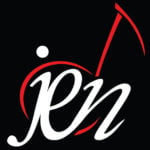Sight-Reading from the Drummer’s View
by Steve Fidyk
I feel fortunate to have had the opportunity to hold the drum chair for more than 20 years with the Army Blues Big Band. As an ensemble, we read new music daily, record, and accompany guest artists at festivals and universities. One essential skill that is somewhat unique to this type of reading situation, is the ability to examine and interpret a new chart within a few short moments. For most professional musicians, sight–reading on the job is a daily occurrence with minimal rehearsal time. The performance happens without fail as a result of the ability of the musicians to sight–read which includes reading and interpreting the notation and style, articulations and dynamics, and adding nuance to the music. This skill, I believe, can be developed through learning, practice, and experience.
Approach
Below are some concepts and suggestions that might be of value to aspiring students and educators. As I examine a big band drum part, I look for double bar lines which can help me locate the different sections of an arrangement. For example, the first eight measures might be the introduction which would end with a double bar line. Immediately following the introduction, we see a phrase that probably contains the melody. This change in the form is an opportunity for a drummer to change texture– for example moving from sticks to brushes, or from the ride cymbal to the hi–hat. After the melody comes the solo section, which is often followed by phrases of backgrounds played in support of a soloist. The solo section is then followed by a shout chorus, which is usually followed by a re–statement of the melody. These larger portions of information are very important and become my focus as I interpret and improvise.
The Art of Interpretation
My approach when sight–reading is based on how the band responds to my ideas in the moment. In addition to the written rhythms on my part, I pay close attention to the articulation makings notated above the rhythms. These markings are indicators that provide clues on how a particular phrase might swing with the horns in the band. I then apply each “long and short” articulation to corresponding sounds from my drumset. For example, a legato marking above a note (a dash) implies a long sound, and a short sound is indicated with a staccato symbol (.), or a marcato/rooftop accent (^). Sometimes arrangers neglect to add articulation markings on drumset parts. In that case, it helps to consult the lead trumpet part or score to be sure that the articulations match your part.
Why Learn to Read?
The more skill that you have as a musician, the more marketable you become. If you want to be a working player in this economy, it is essential to take whatever gig comes your way, and being able to sigh–read can bring opportunities for more work. If reading big band or small group arrangements are a new concept for you, take your time and be patient with your development. Listening is key to becoming a better reader. Try putting on a recording of the arrangement that you are working on, and listen to the approach of the drummer as you read along with your drum part.
Ask yourself the following questions: How is the drummer responding to the written notation? Is the player “cutting” every figure that is written on the part? What accompaniment is the drummer using in support of the rhythm section, soloist, and ensemble? How does the time feel throughout? Is the drummer using fragments from the melody and background figures to compose their beats and fills? How does the drummer accompany the form of the composition?
This type of “active listening exercise” can help students develop their interpretive and musical skills in a much more efficient manner. We will sound only as strong and confident as our listening skills will allow with any band. Best to you throughout your musical journey.
Steve Fidyk is the drummer and featured soloist with the Army Blues Jazz Ensemble, and an artist in residence at Temple University in Philadelphia, PA. For further information, please visit www.stevefidyk.com.

